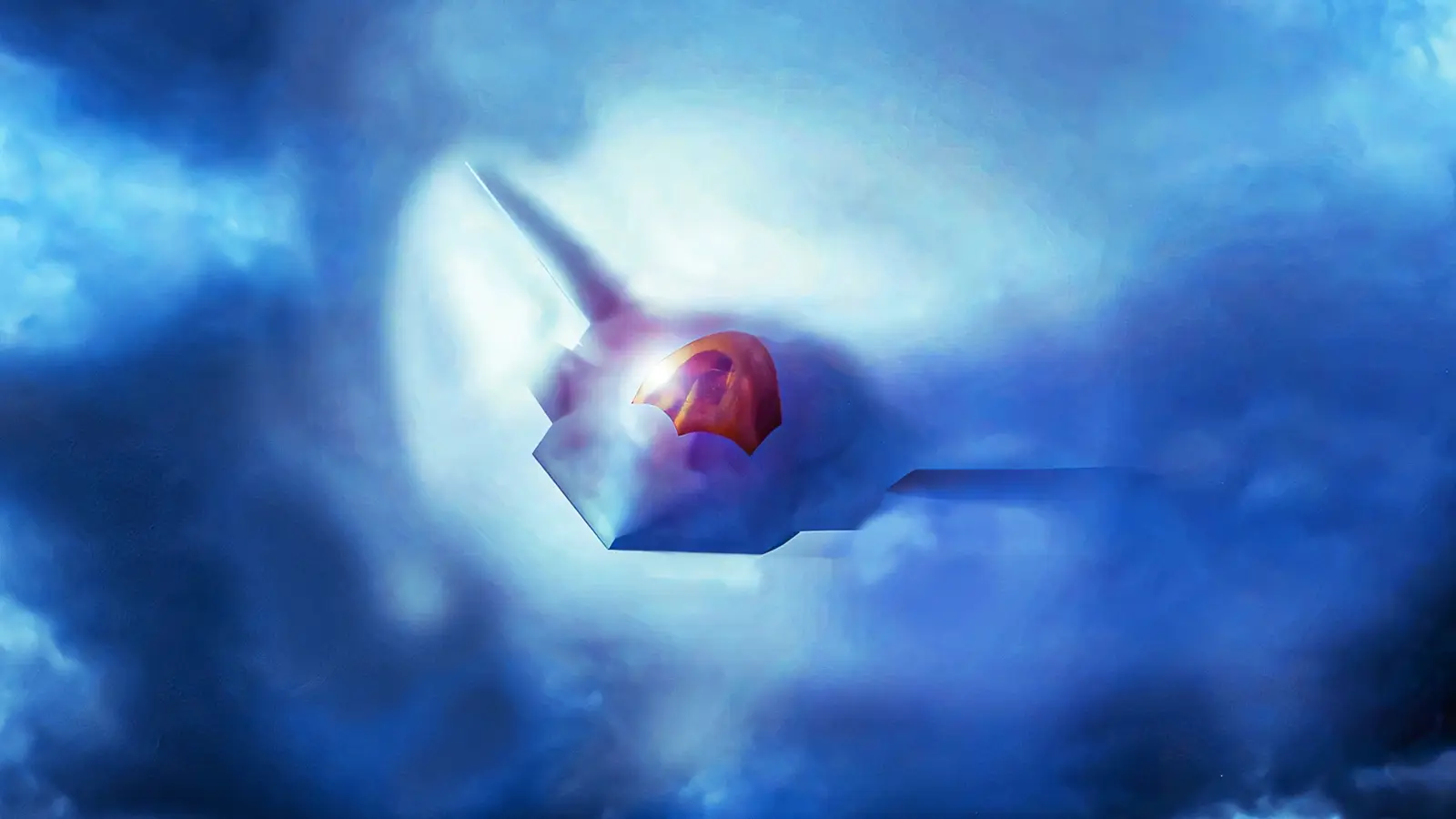Copyright Simple Flying

The term "stealth supremacy" describes the Boeing F-47's next-generation, all-aspect, broadband stealth capabilities, which will be far more sophisticated than those of existing fighters like the F-35. The goal is for the US Air Force's F-47 to achieve superior stealth performance, or "stealth++," enabling it to penetrate deep into enemy territory without being detected. It will have all new, advanced radar-absorbent materials (RAM) in the form of composites, and special coatings to reduce its radar cross-section (RCS) and defeat even the most advanced adversary radar systems. In addition to ultra-low RCS, the aircraft will have a significantly reduced infrared signature, making it nearly invisible to heat-seeking weapons sensors. The F-47's design is speculated to have features like “variable cycle” engines and adaptive intakes to hide the engine face, a critical next-level upgrade for radar evasion. It is being designed primarily for long-range penetration, a capability that current stealth fighters struggle to achieve. Its “exquisite” performance and capabilities will make it the “quarterback” of the USAF’s future mixed fleet of stealth and non-stealth combat aircraft. Stealth Reigns Supreme The F-47 will be able to enter hostile airspace and take on near-peer adversaries like China and Russia by utilizing bomber-like stealth with fighter performance, also known as advanced "stealth ++" technology. Being the best at stealth involves more than just avoiding radar. The entire electromagnetic spectrum, including infrared (IR), acoustic, and visual, will be lessened by the F-47's design. The F-47 is anticipated to have a tailless, blended wing-body design akin to a B-2 or B-21 stealth bomber, in contrast to previous stealth fighters that sacrificed some stealth capability for agility (such as the F-22's and F-35's vertical tails). With fighter-like agility, its layout provides the lowest radar cross-section from any viewpoint. Major General Kunkel told Air & Space Forces' magazine in an interview this March, “We know what it takes to win. It takes air superiority…” General Wilsbach added his opinion on the importance of ensuring aerial dominance in the future: “if you don’t have it, everything else is impossible.” To reduce the aircraft's infrared signal, its cutting-edge adaptive engines will be concealed inside the airframe and its exhaust emissions will be cooled. In order to make the aircraft almost undetectable to infrared sensors and heat-seeking missiles, it is intended to fly at a temperature roughly equal to the surrounding atmosphere. The F-47 is built to "see first, verify first, shoot first, and kill first" thanks to its superior sensing and beyond-visual-range (BVR) combat capabilities. Ultra-sensitive long-range sensors and an artificial intelligence (AI) powered mission computer that combines battlefield data and shortens the "sensor-to-shooter" timeline to milliseconds will be used to accomplish this. The goal is to render conventional dogfighting obsolete by eliminating threats before they can even identify the F-47. As a "quarterback" aircraft, the F-47 will command a swarm of less expensive, attritable Collaborative Combat Aircraft (CCAs) while operating from a safe standoff distance. This preserves the extremely valuable manned fighter by enabling the F-47 to test and overwhelm enemy air defenses using CCAs as probes, jammers, or decoys. Designing Air Dominance It is anticipated that the F-47 will be more affordable than the F-22, enabling more aircraft to be purchased. It is expected to be less maintenance intensive, and is being made with a flexible architecture to adapt to emerging threat technologies. Its advanced stealth, combined with an extended range, allows it to perform deep-penetration missions without exposure even in highly contested areas. The USAF strategy focuses on a fast, long-range, stealthy crewed fighter aircraft initially referred to as the Penetrating Counter-Air (PCA). At conception, the PCA was designed to operate independently without support from uncrewed drone fighters, aka CCAs. That changed with advancements in the automation of aircraft in recent years. US Air Force leaders have since shifted to a concept of supporting drones that enhance operational capabilities alongside crewed F-47s and other fighters. With rivals possessing advanced long-range radar and missile systems, the F-47's ability to remain undetected while operating far from friendly bases is crucial. Compared to earlier stealth aircraft, it will have more sophisticated RAM and is expected to use heat-resistant ceramic coatings to mitigate IR signature at supersonic speeds. To push the limits of range and performance, the first ever “variable cycle” (VCE) jet engines are being developed to flip from marathon to sprint power levels instantly. The Exquisite Fleet The F-47's unmatched stealth, increased range, sophisticated sensors, and combat technology make it an "exquisite" military system of the highest order. Almost exclusively using next-generation technology, the F-47 will vastly outperform fifth-generation aircraft. The F-47's use of multispectral stealth technology to evade detection in disputed airspace will surpass that of the F-117 Nighthawk and the B-2 Spirit, its only match perhaps being the upcoming B-21 Raider. In May 2025, Air & Space Forces Magazine reported the F-47's combat radius is expected to surpass 1,000 nautical miles and fly faster than Mach 2 thanks to the VCE engines that can manage turbine speed by stage to optimize performance. Switching from a gas-sipper to a powerhouse at the flip of a switch enables it to operate farther from friendly bases and safeguard refueling tankers, especially across the great distances of the Indo-Pacific. Air Force Secretary Frank Kendall revealed plans in 2023 for a possible fleet of about 1,000 sophisticated drones and 200 next-generation jets that would be used for support and ammunition transportation. The Air Force intends to acquire at least 185 of these new aircraft by 2025, and the F-47 is scheduled to be developed between 2025 and 2029. The Future High Low Fleet At the "exquisite" high-end element of a high-low fleet structure is the F-47 fighter, which is the linchpin for gaining air superiority in hotly contested airspace. As the "low-end," CCA drones assist the F-47 by carrying out electronic warfare, reconnaissance, and other mission profiles, enabling riskier operations without endangering expensive crewed fighters. High-end support, fifth-generation fighters like the F-22 Raptor and F-35 Lightning II are part of the fleet beneath the F-47. The F-22 is currently undergoing modernization to improve its capabilities in contested environments, and despite its approaching retirement, it continues to be an unrivaled air superiority fighter. Alongside F-47s, the F-35, a vital component of today's fleet, functions as an efficient information node to support situational awareness. As a "missile truck," the fourth-generation plus F-15EX Eagle II can launch long-range missiles while avoiding the most heavily defended areas. It enables the F-47 and F-35 to concentrate on more crucial engagements by supporting air superiority missions in less contested areas. At the lower end, the fourth-generation F-16 Fighting Falcon serves as a low-cost, multirole role that provides mass airpower for missions in permissive or semi-permissive airspaces, including counterinsurgency and homeland security. Some F-16s are still being improved, but in situations where more advanced capabilities are required, they are anticipated to be phased out. Winning The Air War Of Tomorrow The F-47 is not just a replacement for existing fighters - it is a fundamental shift in air combat strategy, redefining the concept of air power on the future battlefield. The associated delineation between different generations of fighters in the high-low fleet is a key aspect of the new strategic doctrine, enabling the Air Force to maintain a layered, capable, and cost-effective force. The deployment of fewer high-value F-47s for critical missions mitigates the risk to costly assets. As a "quarterback" aircraft that can lead swarms of CCAs to carry out high-risk missions and increase the F-47's sensor capabilities, it maximizes the potential of manned-unmanned teaming. The F-47’s avionics will operate with an artificial intelligence (AI) co-pilot for danger prioritization and tactical advice in the cockpit. Meanwhile, the CCA can be used to take on high-risk tasks and preserve the manned aircraft. The extremely high level of flexibility, paired with never-before-seen live data analysis onboard in real-time, makes tailored responses to threats possible in a way unlike anything else in history. This strategy enables the concept of “distributed lethality,” where the Air Force can carefully spread out its combat power, using the F-47 to command multiple CCAs rather than risking more pilots and fighters on perilous missions. The high-low approach also addresses fiscal pressures by maximizing overall military capability with a limited number of F-47s and a larger pool of less costly, attritable drones, achieving a well-rounded "system of systems." Boeing Wins The Race The NGAD development contractor was supposed to be chosen in 2024, but plans were put on hold in May of that year because projected costs had increased to three times those of the current F-35 Lightning II fighters. As a result, an internal investigation was launched to evaluate the program's feasibility and its capacity to maintain air dominance amid rivals' swift advances in aviation technology. The program gained momentum when the Defense Advanced Research Projects Agency (DARPA) initiated the Aerospace Innovation Initiative in 2014. On March 21, 2025, President Donald Trump officially announced the continuation of the F-47 program and revealed that the engineering and manufacturing development contract, exceeding $20 billion, would be awarded to Boeing. In September 2025, Stars and Stripes reported that General Allvin, the Air Force chief of staff, stated that the inaugural flight had been rescheduled to 2028, and production of the first F-47 had already commenced. It is expected that this contract will rejuvenate Boeing's military aircraft branch, especially its St. Louis, Missouri, fighter production line. The program has been testing experimental X-planes since 2020. The F-47 is expected to make its first flight by the end of Trump's term in early 2029. Air Force officials indicated that the designation "47" has at least two different symbolic meanings: it pays homage to the legacy of the P-47 and honors the founding year of the Air Force, 1947.



